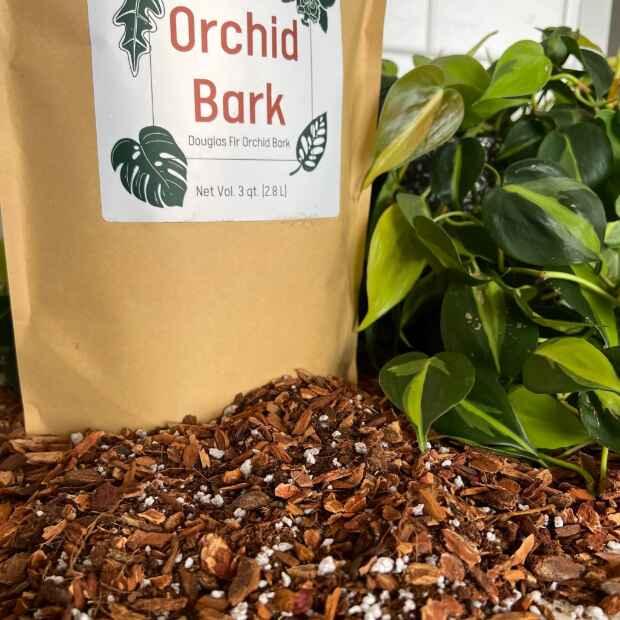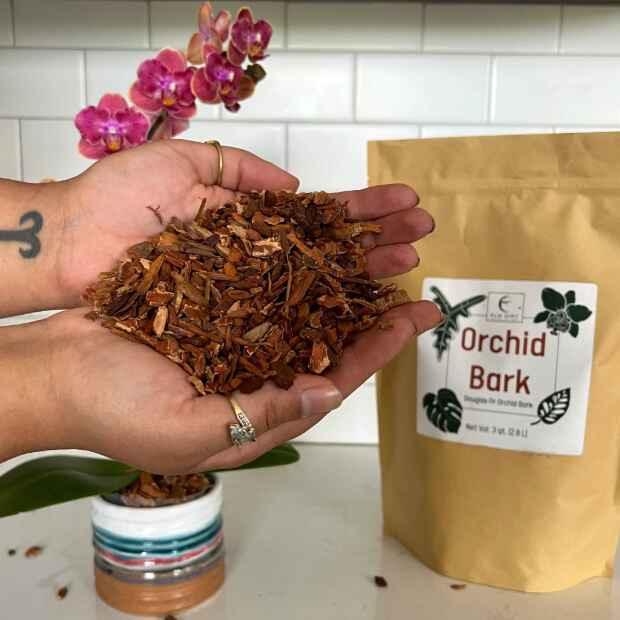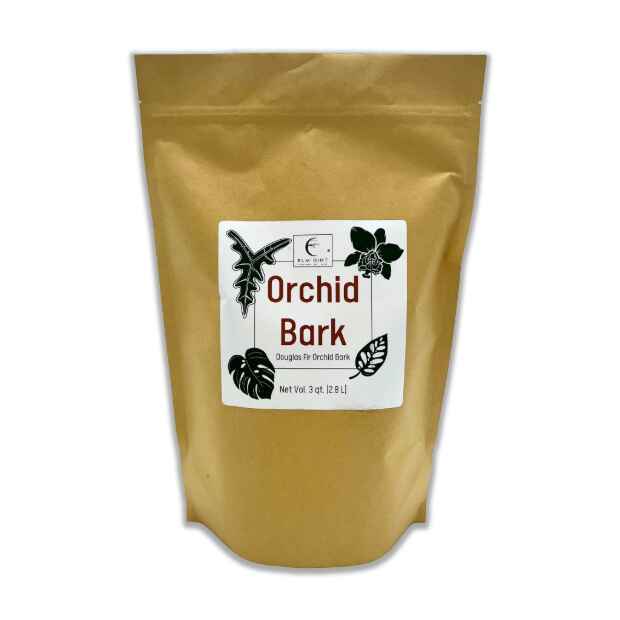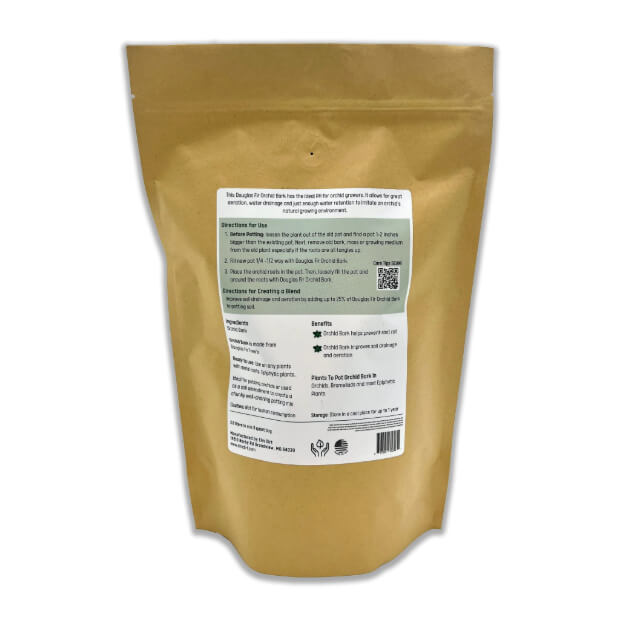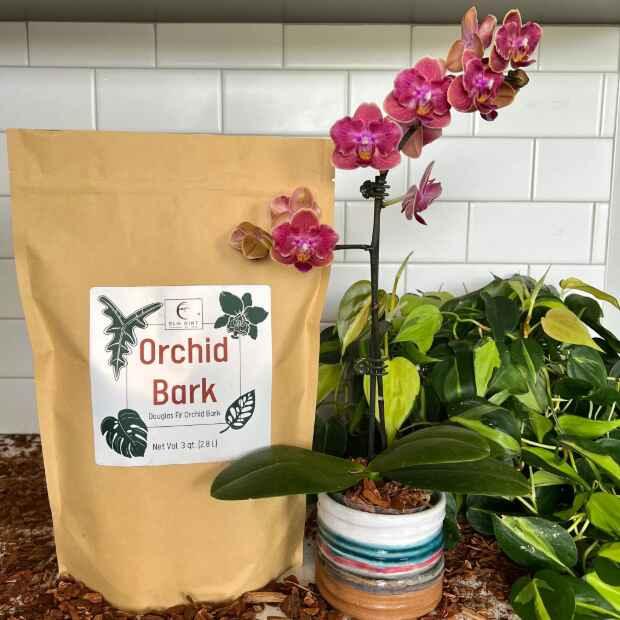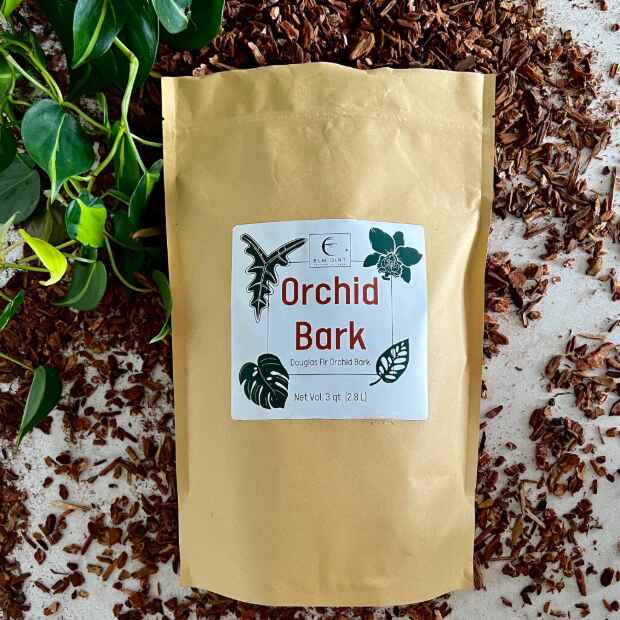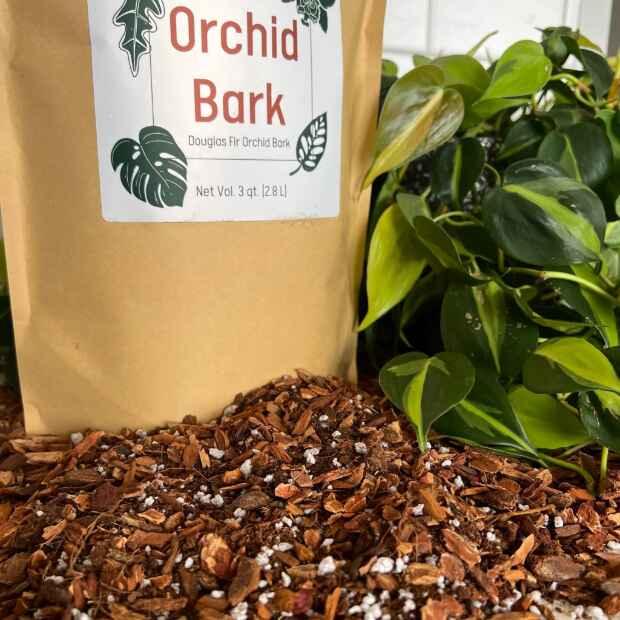
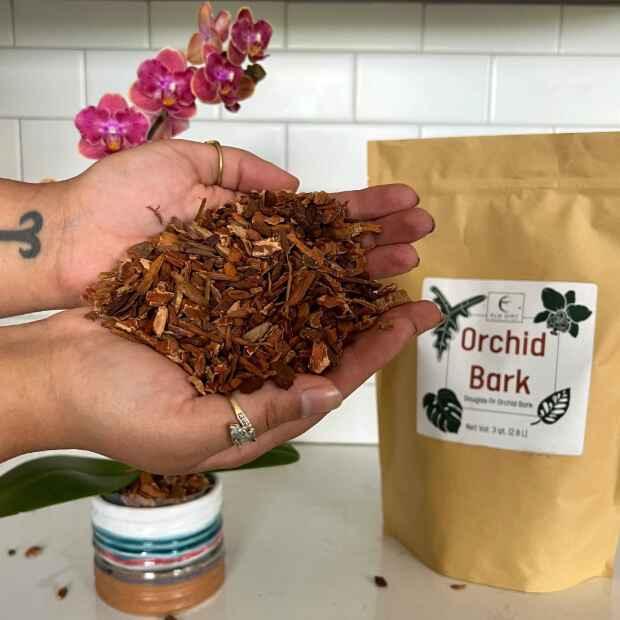
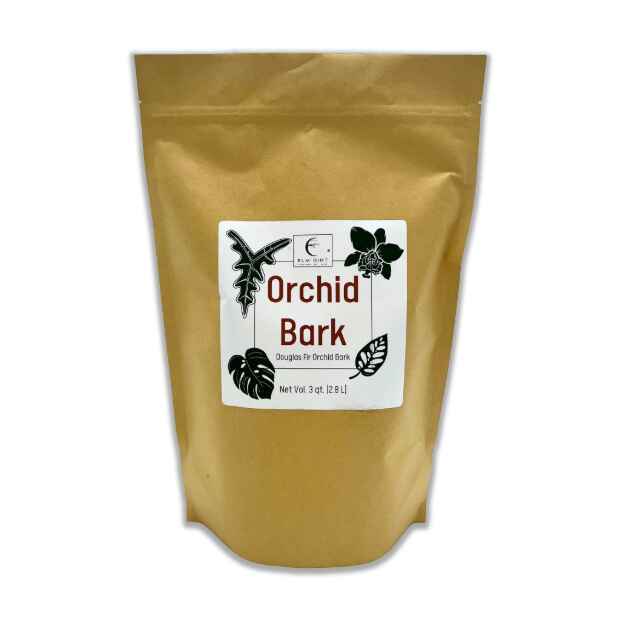
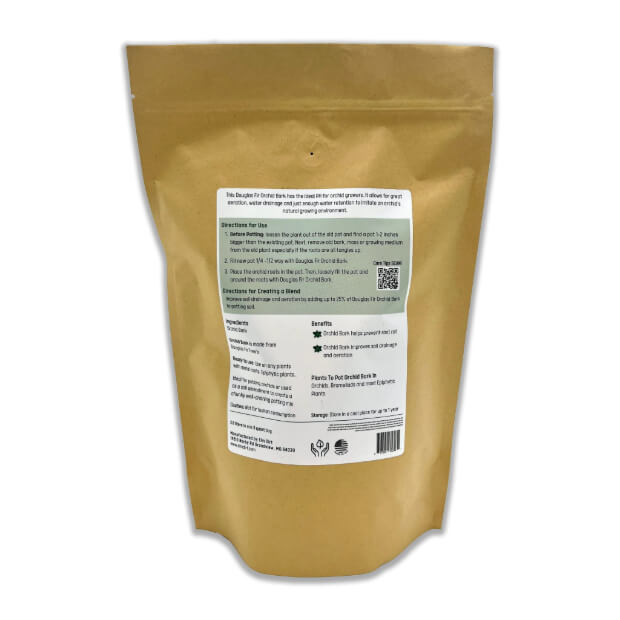
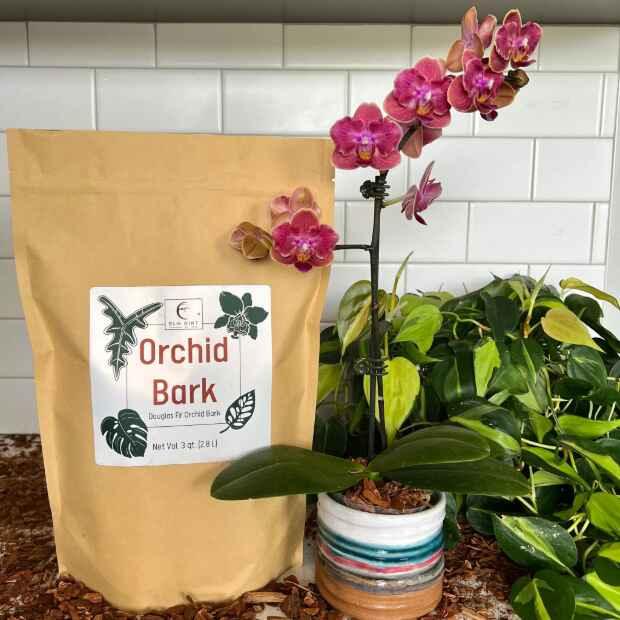
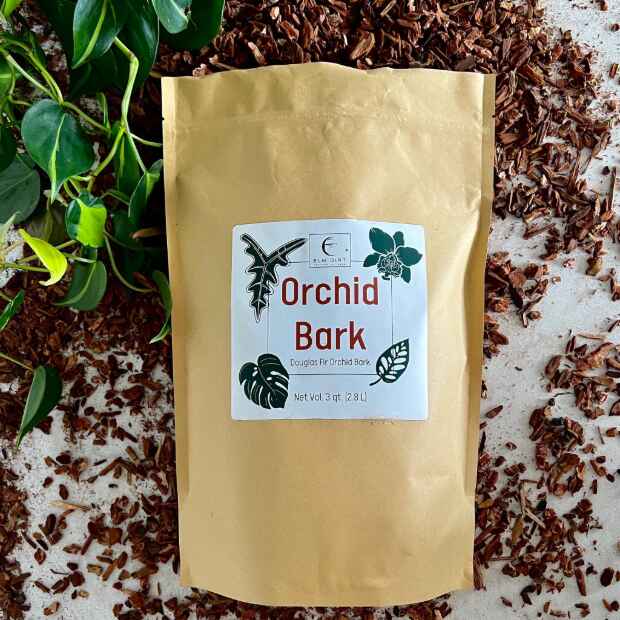
Why Douglas Fir Bark Makes All the Difference
Here's what most people don't realize about orchids: They're not soil plants. In nature, they grow on trees with their roots exposed to air. When you pot an orchid in regular potting soil, you're basically drowning it.
That's why orchid bark exists. It mimics the chunky, airy environment orchid roots evolved in. But not all bark is created equal. Douglas Fir bark stands above the rest because it resists breaking down, maintains the right pH naturally, and creates the perfect balance of moisture and air.
Professional growers use Douglas Fir for a reason—it just works better than cheaper alternatives. Your orchids will show you the difference with stronger roots, healthier leaves, and those stunning blooms you're after.

What Makes This Orchid Bark Special
Prevents Root Rot
The chunky pieces don't pack together tightly, so water drains freely through the pot. Your orchid's roots get moisture without sitting in it—which is exactly what they need to stay healthy.
Perfect Air Flow
Orchid roots breathe. Seriously. They need oxygen just as much as water. The irregular chunks of bark create natural air pockets throughout the pot, letting roots breathe freely like they would on a tree.
Natural pH Balance
Douglas Fir bark is slightly acidic, which happens to be exactly what orchids prefer. No pH adjustments needed. No guesswork. It's just naturally right.
Lasts Way Longer
Cheap bark breaks down fast, turning into mush that clogs up your pot. Douglas Fir resists decomposition, so you can go 2-3 years between repottings instead of annually. Less work. Less stress on your plants.
Promotes Healthy Roots
The natural texture gives roots something to grip onto. You'll see thick, silvery-green roots wrapping around the bark—that's what healthy orchid roots look like.
Professional Quality
This is the same grade of bark used by commercial orchid growers. If it's good enough for the pros who grow thousands of orchids, it's definitely good enough for your collection.

Perfect For These Plants
While we call it orchid bark, it actually works beautifully for any epiphytic plant—basically anything that grows on trees in nature.
Phalaenopsis
The classic moth orchid loves this bark
Cattleya
Chunky roots thrive in chunky bark
Dendrobium
Needs excellent drainage—bark delivers
Oncidium
Dancing lady orchids appreciate the airflow
Bromeliads
Another tree-dwelling plant that loves bark
Epiphytic Cacti
Christmas cacti and similar varieties
Want to learn more about orchid care? Check out our complete orchid success guide for tips on watering, light, and getting those blooms to reappear.

How to Repot Your Orchid
Repotting orchids isn't as scary as people think. Here's the straightforward approach that actually works.
Step-by-Step Repotting Guide
Loosen the Roots
Gently remove your orchid from its current pot. Pick a new pot that's 1-2 inches bigger than the old one. Shake off the old bark and untangle any circling roots. Trim any mushy or dead roots with clean scissors.
Fill the Pot
Add Douglas Fir Orchid Bark to fill the pot about 1/4 to 1/2 of the way. You want some bark under the roots to support them.
Position and Fill
Place your orchid in the center of the pot. Hold it steady and fill around the roots with more bark. Don't pack it down hard—just settle it gently. The top of the root ball should sit right at or just below the pot rim.
Pro tip: After repotting, wait 3-5 days before watering. This gives any damaged roots time to callus over and prevents rot. Your orchid might look a little sad at first, but it'll perk up once it adjusts.
Creating Custom Blends
Sometimes you need something between pure bark and regular potting soil. Here's how to make it work.
For improved drainage in regular potting mixes: Add up to 25% orchid bark to your standard potting soil. This works great for plants that like good drainage but aren't full epiphytes—think succulents, cacti, or herbs.
For orchids that like more moisture: Some orchid varieties (like Paphiopedilums) prefer a mix that holds a bit more water. Combine orchid bark with sphagnum moss or coco coir in about a 50/50 ratio.

Why Orchid Bark Works So Well
Think about where orchids live in nature. They're clinging to tree bark in tropical forests with their roots completely exposed to air. Rain washes over them, they soak up what they need, and then they dry out again.
That's the cycle orchid bark recreates. When you water, the bark absorbs some moisture and holds it temporarily. But the chunks don't stick together, so excess water drains away fast. Between waterings, air circulates freely around the roots.
This wet-then-dry cycle is what orchid roots evolved for. Give them that environment, and they'll reward you with healthy growth and regular blooming. It's really that simple.

